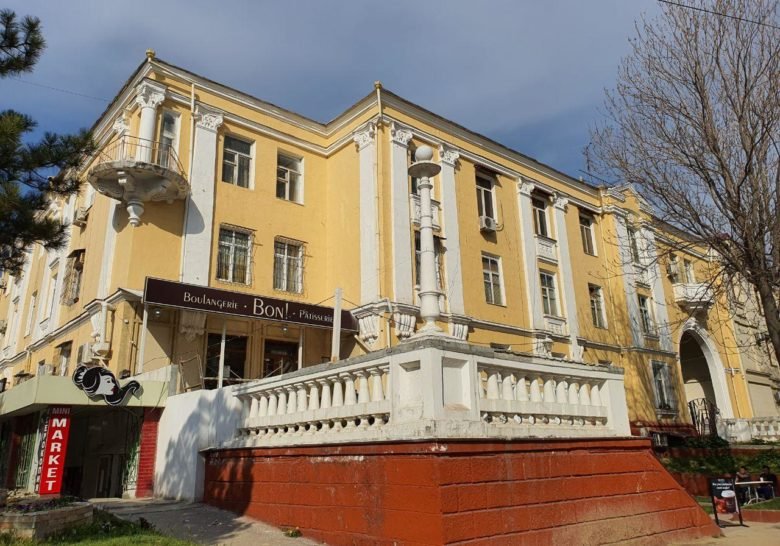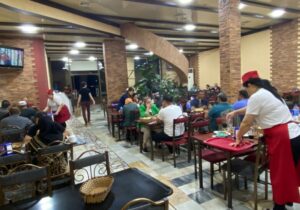Navoi Avenue is one of Tashkent’s oldest streets. According to several sources, in the 12th to 15th centuries it connected the city proper with neighborhoods where generations of craftspeople resided. Later, during colonial Russian rule, it connected the new, Russian-built part of Tashkent with the old city. In 1938 it was given its current name, to commemorate the 500th anniversary of the nationally-beloved poet Alisher Navoi, who was one of the pioneers of vernacular language in literature in the area. His statue can be seen in front of the Alisher Navoi State Museum of Literature (formerly a theater).
The buildings on Navoi Avenue were constructed mostly between the 1930s and 1970s. Many have the characteristic look of Stalinist Empire architecture, with strong “national” highlights that borrow from Central Asian traditional designs. Symmetry, columns, large front entrances, balconies impress with their look, especially in contrast with later architecture. The Navoi Museum itself is exemplary of this, as is the building across from it, and further down the street eastward, the current Ministry of Health building. Toward the Anhor canal, residential buildings from that era have a different kind of charm – slightly run-down but clearly majestic in their heyday.
A fun fact – this was the street where the first tram in Tashkent ran – the tracks are still there, even though trams are no longer running in the city.








